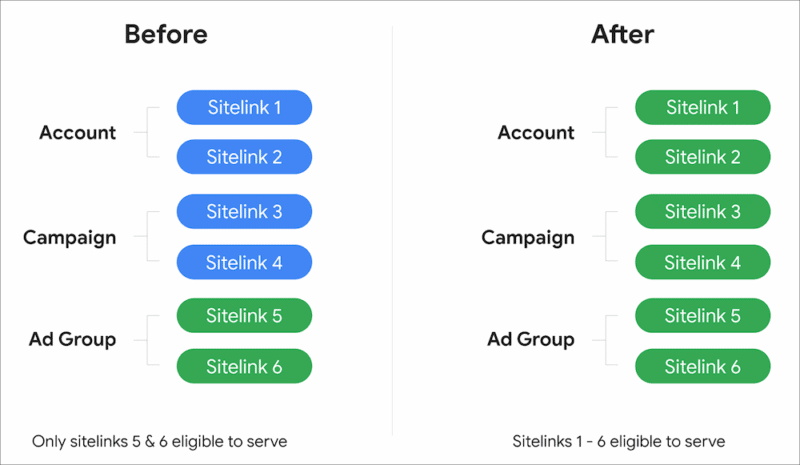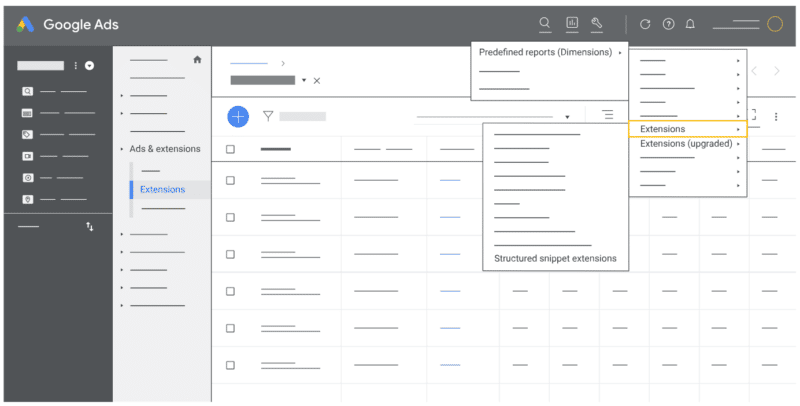The Google Ads upgrade of all extension types (with the exception of Location and Image extensions) will be completed this Saturday.

If you haven’t seen in your accounts already, the new extensions have a handful of new benefits as well as some new ways you’ll need to find your data.
Here’s everything you need to know once the upgrade is completed for all advertisers.
What’s new with the upgraded extensions?
It was time for the rebuild of extensions and according to Google this upgrade will “reduce the complexity of extension creation and management” along with adding additional features.
As reported in February, one of the biggest improvements to extensions is the ability to pause them. You will no longer have to remove or delete extensions in your campaigns.
With this toggle feature, pausing extensions “won’t affect the performance of your ads or extensions,” which is a huge win in and of itself.
Additionally, this new upgrade will allow standard extensions to truly live alongside automated extensions. With this update advertisers will have “greater visibility into automated extensions for the first time and more control to decide if they want to use them as part of their campaign.”
Automated extensions will also have the ability to be paused by advertisers. According to Google, “advertisers can see a 20% increase in click-through rate on average when four sitelinks show with their search ads,” and these autogenerated extensions may help those short on time.
Lastly, when upgraded, sitelinks, callouts, and structured snippets extensions can trickle from higher levels of a campaign down to a lower campaign level. So Account/Campaign Sitelinks could show within an ad group that already has its own sitelinks:

This would be a good time to check your accounts and make sure that any of your Account/Campaign sitelinks, callouts and structured snippets extensions are acceptable across all ads and ad groups.
What’s going away with the upgraded extensions?
As with most change, these new upgraded extensions will leave a few features behind. Elements being deprecated as part of the extensions upgrade are:
- Device preference for mobile in all extensions.
- Start and end date in call extensions.
- Ad schedules in-app extensions.
- Start and end time and ad schedule in price and structure snippets.
How to find legacy extension data
Google in order to see legacy data post-migration advertisers will have to utilize Reports. Google chronicled the steps along with API information in a recent update.

The legacy data can be found in the Predefined reports section and ‘Extensions’ will show historical data while ‘Extensions (upgraded)’ will show your post-migration stats.
Why we care
In May, all extensions (except image and location) will have been upgraded. It may be prudent to double-check accounts to ensure higher-level extensions would be suitable for all ads/ad groups. Advertisers should also keep an eye on the automated extensions generated as well.
A big benefit that you’ll see is the ability to pause extensions as needed without any performance ramifications.
Last, have no fear, your data is still here. Historical data is still maintained, just in the Reports section post-migration.
The post How the Google Ads extensions upgrade may impact your accounts appeared first on Search Engine Land.
No comments:
Post a Comment